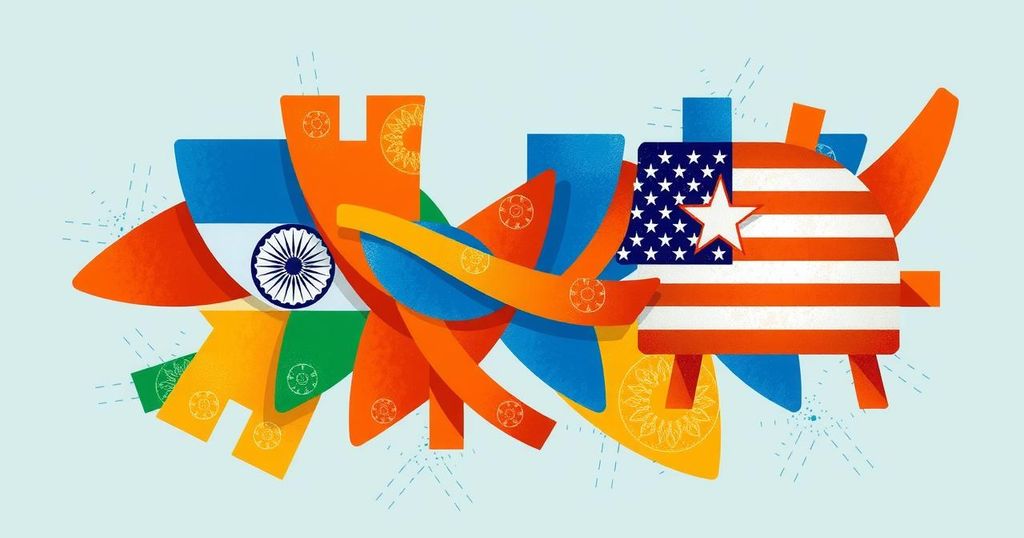Global news
ASIA, ASIA SOCIETY, BRENDAN LYNCH, DONALD TRUMP, EUROPE, EUROPEAN UNION, INDIA, INTERNATIONAL RELATIONS, JAI, JAISHANKAR, KYUNG - WHA KANG, MODI, NA, NARENDRA MODI, NATIONAL SECURITY, NORTH AMERICA, S. JAISHANKAR, SOUTH, TRADE, TRUMP, UNITED KINGDOM, UNITED STATES
Leila Ramsay
0 Comments
Active Trade Discussions Between India and the U.S. Amid Tariff Concerns
India and the U.S. are currently engaged in intense trade negotiations, as expressed by External Affairs Minister S. Jaishankar. A bilateral trade agreement is being pursued, contingent on discussions post the recent Modi-Trump meetings. India aims to strengthen economic ties amid concerns regarding agricultural sectors and global tariff tensions. Various trade agreements are in progress, including negotiations with the EU and UK, reinforcing India’s strategic economic interests.
India’s External Affairs Minister, S. Jaishankar, reported that India and the United States are engaged in “very active” and “intense” discussions regarding trade. His statements were made during an interactive session at the Asia Society, addressing the anticipation surrounding upcoming U.S. tariffs set to commence on April 2. While Jaishankar refrained from forecasting the immediate results of these negotiations, he asserted that there exists a strong “business case” for a bilateral trade agreement (BTA) between the two nations.
Following recent discussions between Prime Minister Narendra Modi and President Trump, both countries have committed to negotiate the initial phase of the BTA by fall 2025. Jaishankar emphasized the ongoing nature of these trade discussions, highlighting their significance within the context of U.S. tariffs. He expressed confidence in the negotiators’ capabilities to secure the best possible agreement, despite acknowledging concerns regarding the agricultural sector in India as a potential barrier.
In addition to U.S. trade talks, Mr. Jaishankar noted India’s pursuit of separate free trade agreements with the European Union and the United Kingdom, indicating that these discussions have reached an advanced stage. He anticipates these agreements could lead to significant new partnerships. When discussing strategic relations with the U.S., he remarked on expectations for an enhanced defense collaboration under President Trump’s administration, citing the administration’s openness to technology sharing.
Jaishankar also voiced India’s interest in strengthening energy ties with the U.S., reiterating the importance of a stable energy supply for India’s growth. He mentioned that the U.S., having been a long-time supplier of LNG to India, remains a dependable source for energy imports, noting a previous stagnation in the trade volume. Furthermore, Jaishankar gave a favorable assessment of the U.S. administration’s policies, which he believes align with India’s interests.
The backdrop of current tariff negotiations includes President Trump’s recent tariffs, aimed at addressing trade imbalances, raising concerns of a global trade conflict. In reaction, India has initiated a strategy to lower tariffs on certain imported goods to demonstrate its willingness to negotiate. The U.S. seeks increased sales of oil, gas, and military equipment to India to mitigate a significant trade deficit currently estimated at $45 billion in India’s favor.
As of 2023, the U.S. remained India’s largest trading partner, with bilateral trade in goods and services reaching $190 billion. Moreover, for the financial year 2023-24, the U.S. ranked as the third largest source of foreign direct investment into India, with $4.99 billion inflows, accounting for a notable percentage of total FDI equity inflows.
In conclusion, India and the United States are actively negotiating a bilateral trade agreement amid rising tensions over U.S. tariffs. Both nations aim to address trade imbalances, with discussions extending to broader strategic and energy partnerships. The evolving trade landscape reflects India’s efforts to open markets while ensuring stable economic ties with major partners, showcasing the complexities of international trade relations in a shifting global environment.
Original Source: www.thehindu.com




Post Comment